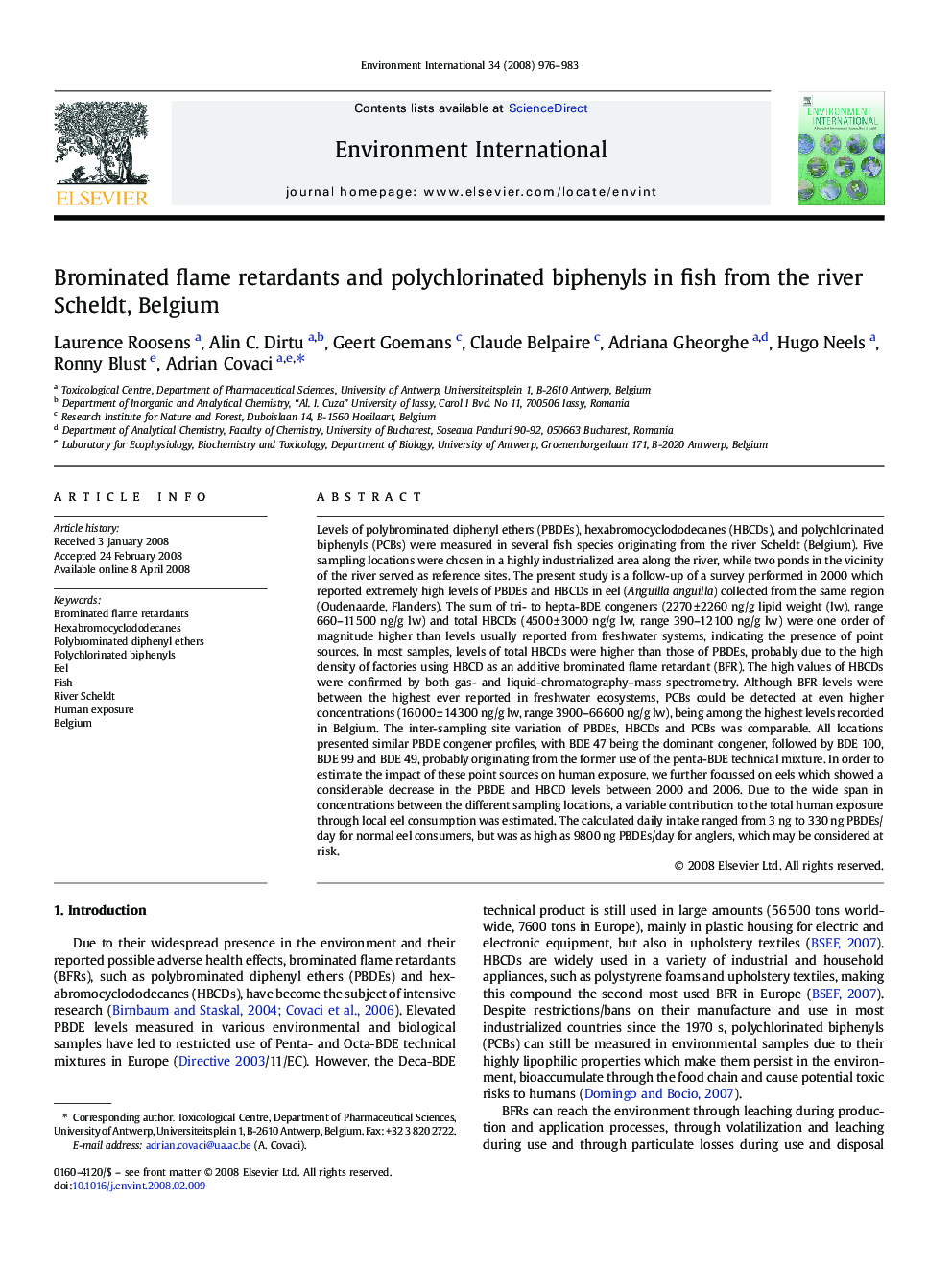| کد مقاله | کد نشریه | سال انتشار | مقاله انگلیسی | نسخه تمام متن |
|---|---|---|---|---|
| 4423691 | 1308837 | 2008 | 8 صفحه PDF | دانلود رایگان |

Levels of polybrominated diphenyl ethers (PBDEs), hexabromocyclododecanes (HBCDs), and polychlorinated biphenyls (PCBs) were measured in several fish species originating from the river Scheldt (Belgium). Five sampling locations were chosen in a highly industrialized area along the river, while two ponds in the vicinity of the river served as reference sites. The present study is a follow-up of a survey performed in 2000 which reported extremely high levels of PBDEs and HBCDs in eel (Anguilla anguilla) collected from the same region (Oudenaarde, Flanders). The sum of tri- to hepta-BDE congeners (2270 ± 2260 ng/g lipid weight (lw), range 660–11 500 ng/g lw) and total HBCDs (4500 ± 3000 ng/g lw, range 390–12 100 ng/g lw) were one order of magnitude higher than levels usually reported from freshwater systems, indicating the presence of point sources. In most samples, levels of total HBCDs were higher than those of PBDEs, probably due to the high density of factories using HBCD as an additive brominated flame retardant (BFR). The high values of HBCDs were confirmed by both gas- and liquid-chromatography–mass spectrometry. Although BFR levels were between the highest ever reported in freshwater ecosystems, PCBs could be detected at even higher concentrations (16 000 ± 14 300 ng/g lw, range 3900–66 600 ng/g lw), being among the highest levels recorded in Belgium. The inter-sampling site variation of PBDEs, HBCDs and PCBs was comparable. All locations presented similar PBDE congener profiles, with BDE 47 being the dominant congener, followed by BDE 100, BDE 99 and BDE 49, probably originating from the former use of the penta-BDE technical mixture. In order to estimate the impact of these point sources on human exposure, we further focussed on eels which showed a considerable decrease in the PBDE and HBCD levels between 2000 and 2006. Due to the wide span in concentrations between the different sampling locations, a variable contribution to the total human exposure through local eel consumption was estimated. The calculated daily intake ranged from 3 ng to 330 ng PBDEs/day for normal eel consumers, but was as high as 9800 ng PBDEs/day for anglers, which may be considered at risk.
Journal: Environment International - Volume 34, Issue 7, October 2008, Pages 976–983